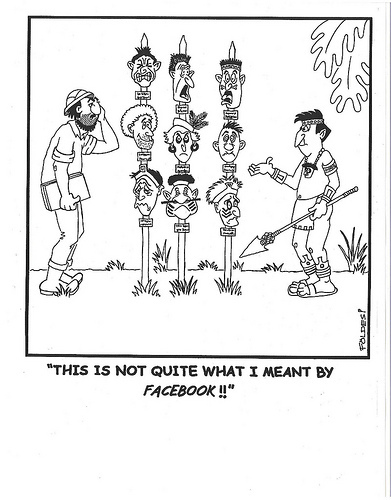The "Practice" Role of Anthropology, the Gap between Academic and Applied Anthropology, and the Ethical Balance
"Practice" in term of anthropology
PRACTICE/PRAXIS:
"Concept developed during the 1970s, under the influence of such thinkers as Bourdieu, Giddens and others, to denote acts that carry their own rules / limitations / structures within themselves. The term originated as a way of overcoming the divisions between structurally oriented, collectivistic studies (Lévi-Strauss, Durkheim, Marx) and more processually and individually oriented studies (Weber, Barth). The concept has its roots in Marx, and his form of the word (praxis) is often used today in a meaning that is close to his (if one does not explicitly want to indicate a connection to Marx, the form practice is recommended.) In the 1970s and 80's, however, the concept acquired the more general meaning of action, conceived as a bodily-and-social, rather than a purely social phenomenon. The inspiration for this wider interpretation was in part derived from Marx himself, but also has roots in the studies of gender that were inspired by feminist anthropology, the interest in (bodily) health and nutrition that were stimulated e.g. by medical anthropology, and studies of bodily discipline, inspired by Foucault.
Then, in 1984, came Sherry Ortner's influential article "Theory in Anthropology since the Sixties", which summarized many of these developments (particularly as they emerged in the United States), and predicted a great future for studies of practice. These predictions have only partly been realized. The postmodern wave during the 1980s undermined the belief in grand theory (and, in many cases, in studies of concrete action), thus reducing the attaction of the synthetic project of the practice theorists. On the other hand, some branches of postmodernism were specifically oriented towards the body, as a more reliable source of truth than language, which was very easy to deconstruct. These postmodernists sought inspiration in such authors as Foucault and Bourdieu, and contributed greatly to the popularity of such concepts as "embodiment" and "habitus" in latter-day anthropology.
Source: http://www.anthrobase.com/Dic/eng/def/practice.htm
The “practice” role of anthropology is the use of the discipline’s methodologies and theories in the performance of research on groups and communities with the aim of finding solutions to practical problems, such as: exploring routes to increased prosperity and sustainable development; solving cross-cultural issues of communication and cohabitation; representing the perspectives and cultural values of foreign cultures in the processes of negotiation with various large entities that through globalization are increasingly coming into contact with and altering the lives of indigenous communities; interpreting user data for the modification of product design; interpreting client data for the modification of the healthcare process; investigating the impacts of various human-environmental interactions and evaluating multiple modalities for more sustainable human-environment symbiosis; and other real-life applications of anthropological knowledge. As Goldschmidt quotes Taylor in “Notes toward a Theory of Applied Anthropology” (2001), “Anthropology is essentially a reformer’s science.” (423).
Or at least it was, as the discipline was originally conceived. Since those beginnings, anthropology has undergone multiple schisms which divided anthropologists into separate camps and led the field away from its early orientation toward practical application: the first based on their perceptions of social issues (social Darwinists and liberals in London); and then, after the retreat from addressing volatile public problems which that first break caused – leading to an aloof discipline self-consciously removed from the practical problems of culture, more interested in their subjects as sources of information than as individuals with needs which they could help meet – the schism between ‘academic’ anthropology and applied anthropology has occurred, and continues to exist in multiple ways, as pointed out by Goldschimidt’s article mentioned above and by Baba’s “The Fifth Subdiscipline: Anthropological Practice and the Future of Anthropology” (1994). This disconnect continues to exist for many reasons, but one of the primary differences between academic and applied anthropology is that in academic anthropology, especially as it now stands in relation to post-modernism’s self-reflexivity, the suggestion of any course of action by an anthropologist can be considered an unethical intrusion into another ‘lifeway’ – a continuation of imperialism and post-colonialism, the paternalistic ‘helping hand’ that historically has been anything but. Applied anthropologists, on the other hand, can take a given community’s motivations and desires and use their own expertise and the methodology of the discipline to define paths toward those community-driven and derived futures.
Such ‘practice’ of anthropology can contribute to the ‘pure theory’ of the academic discipline in much the same way that traditional anthropology contributes and has always contributed to theory: by providing studies and investigations of groups and cultures which provide clues toward understanding the ways these groups function, interact, see the world, envision their individual and collective futures, and place relative values on different aspects of their and other cultures traditions, beliefs, and products. The true benefit of including applied anthropological studies into the canon from which theory is created and recreated is the process that applied anthropology inherently initiates in a culture. Whatever the outcomes of applied research, those outcomes are then administered in some way for the desired solution to whatever problem was being studied. This application of anthropological knowledge and the resulting shifts in the groups’ well-being is a process that could contribute greatly to a fuller understanding of cultural change, the resilience of cultures, processes of selective globalization, and many other aspects of ‘culture’ about which it is important to develop, test, and refine theoretical models. As Goldschmidt writes, “…application demonstrates the validity of theory.” (424). Thus by applying knowledge, theories can be tested and refined. The application of the knowledge completes the scientific process.
Too much to hope for?
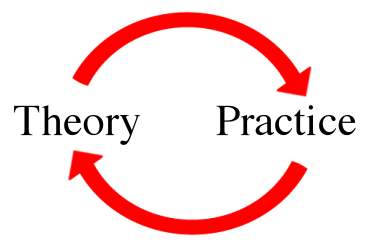
However, as both of the aforementioned articles pointed out, the bridge between academic theory in anthropology and the diverse findings of applied anthropology is almost non-existent, and this disconnect can be viewed as symptomatic of one of the primary challenges facing practicing anthropologists. The bridge does not exist for a number of reasons, but a review of those reasons finds that many if not all of them stem from the side of the academy. Thus Baba delineates the many reasons for the ‘gap’ between the anthropological tradition as it is maintained in the academies and the ‘fifth subdiscipline’ of applied anthropology: “…data from applied research do not flow regularly to general theory-building in anthropology.” (Baba 1994:181), the author writes, also pointing out that journals such as American Anthropologist do not publish applied work because it does not meet their criteria for contributing to theory.
Another reason for the gap in terms of accessible results of applied work comes for the simple fact that many practitioners do not publish their work. In part this is due to the fluid and diverse format of applied results, which does not fit into the tradition of anthropological publication discourse. Another cause of the lack of publication is the interests of the employer, who may maintain proprietary rights to the information they commissioned to be gathered. Yet another implication of publishing such information is the ethical dimension: such data could be used for purposes which do not reflect the desires of the subjects or the anthropologist’s ethical stance. Yet another reason Baba points out for the lack of applied findings within the anthropological discipline is the inherently interdisciplinary nature of applied work, which tends to lead applied anthropologists to gravitate toward other disciplines for the presentations of their findings (182). Baba also blames the lack of a healthy conduit between the academy and the practitioners on the “prestige gap” and the “ethics gap”, describing the trend in the academy to look down on practicing anthropologists both for the “fast and dirty” nature of their work and their ‘quilting together’ of theoretical morsels, and for their intentionality in orchestrating solutions to practical problems and thus ‘interfering’ with cultures (182). These ‘gaps’ seem to have roots that are historical in nature, the first coming from an older model about how our society views the proper role of the scholar, academic, or thinker (the comparison between the theoretical physicist and the engineer is apt), and the second coming from a more recent theoretical enterprise with a big, healthy, perhaps traumatic impact on anthropology’s self-consciousness – post-modernism.
It seems like this gap between the academic and applied anthropologies will likely ‘address itself’, in that the growing recognition of the relevance and importance of applied anthropology to the academic discipline, its ability to test and refine theory, its voice in the public sphere (which academic anthropology lacks), and the growing numbers of practicing anthropologists and organizations looking for them, all point to a leveling of the ‘prestige gap’. Initiatives such a Van Willigen’s to collect applied anthropological data for use by anthropologists of both the academy and other practitioners will certainly yield an increasing amount of interaction between the theoretical and the practical.
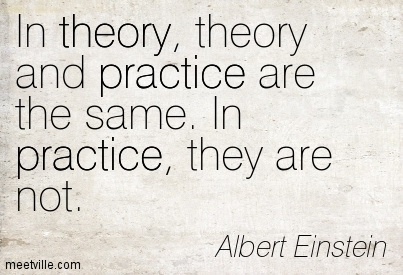
Ethical Balance
Another challenge facing applied anthropology is the ethical balance practitioners must try to maintain between competing sets of motivations and ethical systems. An applied anthropologist often must consider the desires and motivations of the groups being studied as well as those of the organization employing them to do the study. The impacts of the study on both groups and the wider world must also be considered. Practitioners may even find themselves with ethical principles of their own that conflict with both the ethics/desires of the group being studied and those of their employer. An anthropologist’s perceptions of what may result from a given application of anthropological knowledge may not encompass the many uses for which such knowledge is destined, as Goldschmidt points out concerning his California research, which “…undermined the myth of the family farm.” (427) and was exploited by big agriculture to the detriment of small farmers. Goldschmidt shows that such applied work can undermine the future viability of the subjects, as above, and also points out that applied research can produce findings which the employer wants nothing to do with, as illustrated in his discussion of his research into the relative quality of life in small-farm towns and industrial-farm towns, the results of which induced personal attacks on the anthropologist, the discontinuation of the study by the USDA due to political strong-arming, and the resulting findings of Goldschmidt’s research never being published (327). Such an example of the denial of an anthropologist’s findings based on the goals of his or her employer constitutes one of the major ethical challenges of practicing anthropology.
The solution to the ethical gap seems to be an inevitable and gradual recognition by the academy that the post-modernist mood, which at its extreme denies the validity of any course of action as motivated by socio-historical power mechanisms, has resulted in the atrophy of anthropology’s original imperative: the use of anthropological knowledge to increase our understanding of and well being in the world. Though post-modernism has raised the ethical bar in many good ways in its attachment to anthropology, creating tools for the evaluation of influences on contexts, ideas, and individuals that questioned many false assumptions and sources of explanation, its fear of action and its almost bashful micro-specificity have occluded much of academic anthropology from the public eye and removed it from active participation in community discourse. The ethical questions that arise in practice and application, and the necessary answers which applied anthropologists must give, raise the eyebrows of those used to not taking a stance, or even recognizing the validity of a given group’s stance, in terms of such questions. Yet the good done in the world by many practitioners validates their ethical stance more than a neutral removal from reality could ever validate an academic’s. Other ethical questions remain unanswered, it seems: how to balance one’s individual ethical stance with the motivations of an employer, for example? What to do when those ethical stances conflict? The same is true when considering the subject/organization discourse and their relative goals. Time constraints may also impose limitations on the thoroughness of one’s work, straining one’s ethical principles for the sake of a paycheck. All of these and other ethical consideration should be addressed in a charter of ethics which could unite applied anthropologists with a creed and bind their employers to certain principles in the use of the information they gathered.
Finally, as Baba points out, there is no one who has a comprehensive understanding of the state of applied anthropology in the global context (183). Without such opportunities to collate, compare, critique, evaluate, and otherwise interact with the multiple forms of applied work both already completed and ongoing around the world, which an archive of such work would allow, the applied anthropologist lacks the global perspectives that could well inform his or her work. The solution to this problem is also a gradual recognition of the issue, and the subsequent creation of multiple interconnected archives for such information. Though again, the ethical questions raised by allowing anyone to access the information would likely limit prospective users to other applied anthropologists.
When should practice not be included in conceptions of theory?
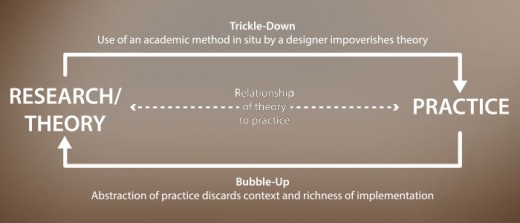

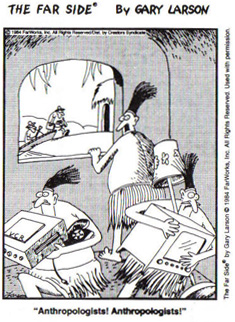
Discussion
As the above images show, there are perspectives for which the anthropologist who values practice of theory over theory alone are lauded, while the cartoons depict what some may see as the shortcomings of practice in the modern world.
